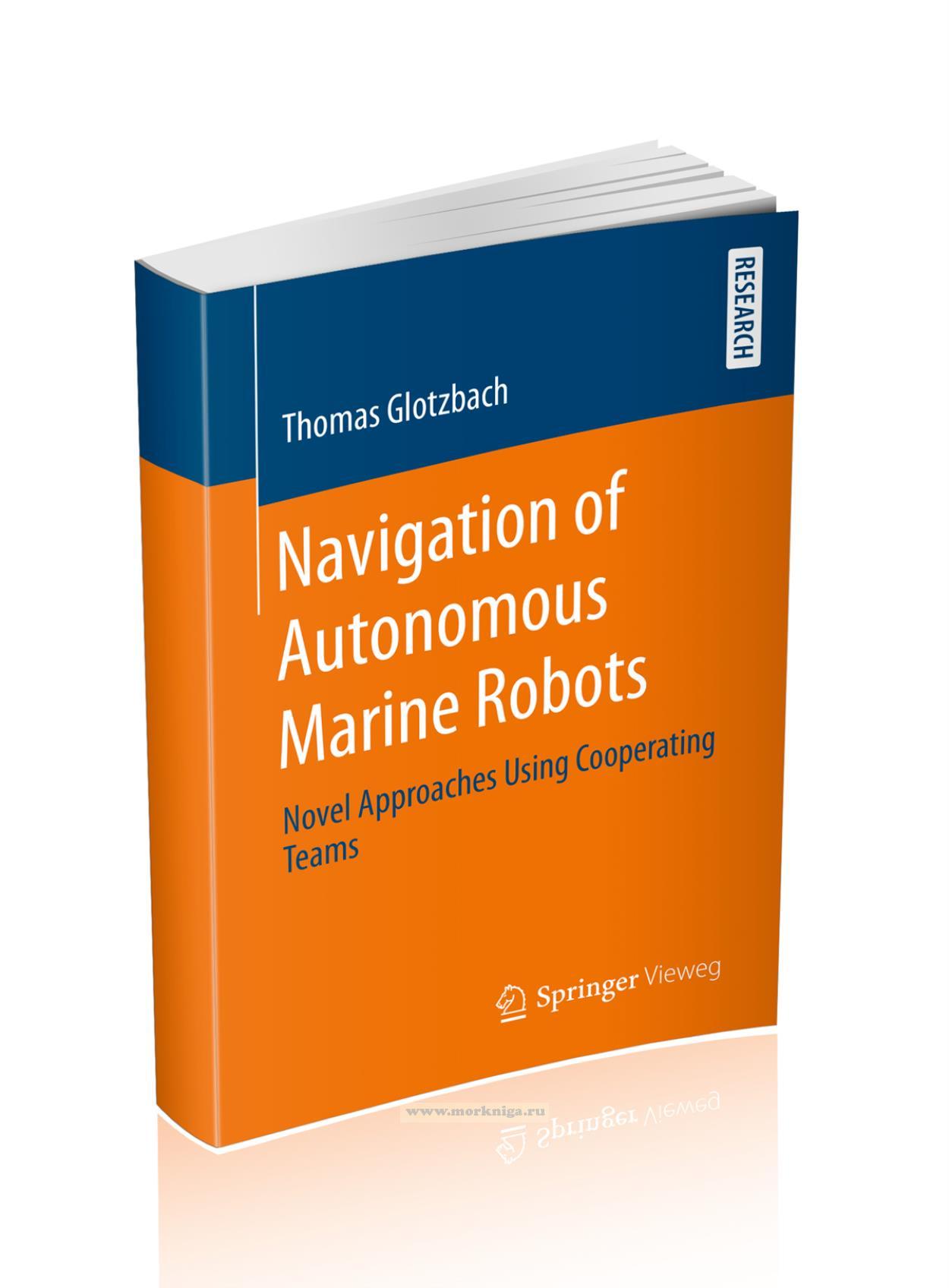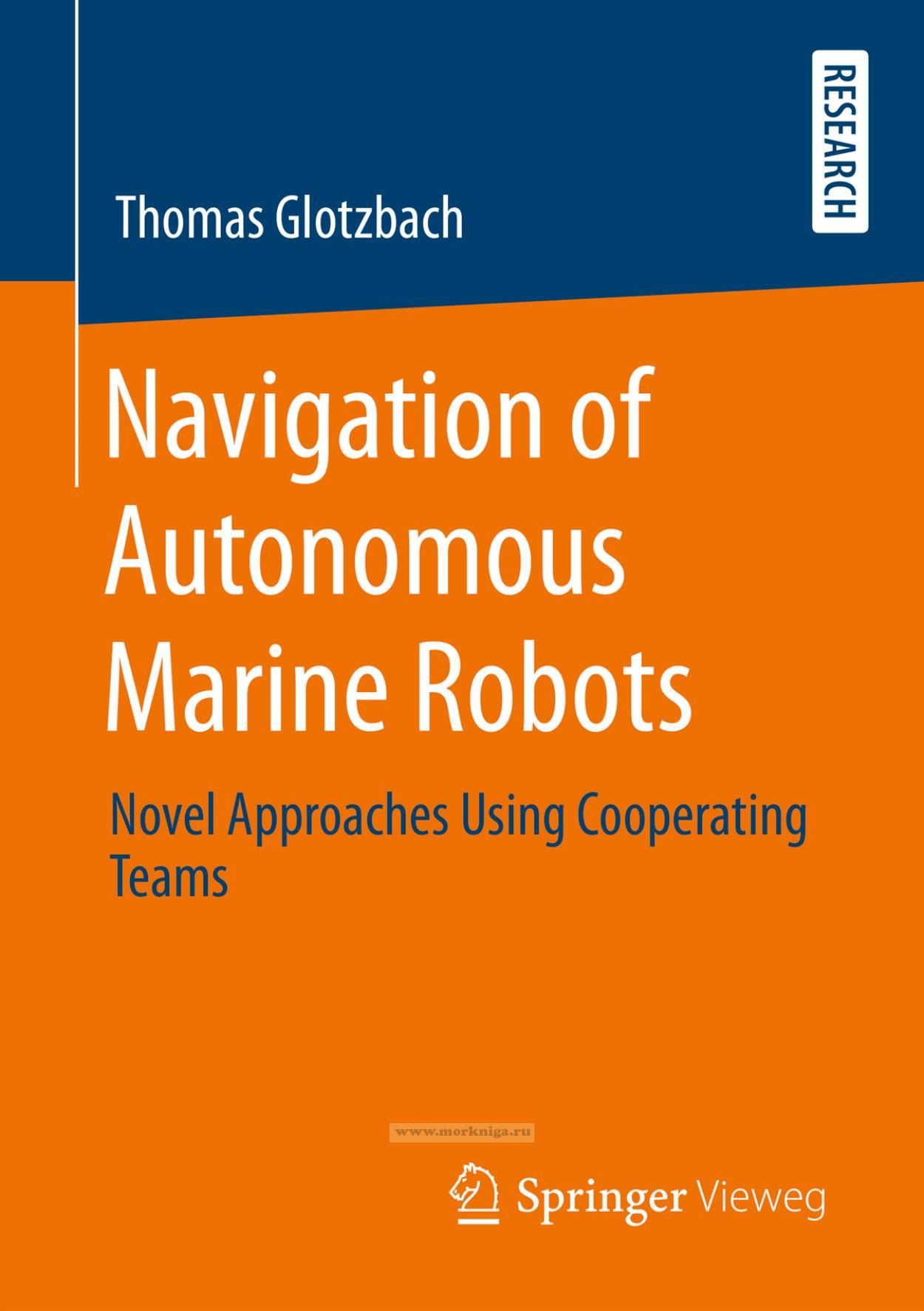Сб с 10 до 16
Navigation of Autonomous Marine Robots. Novel Approaches Using Cooperating Teams/Навигация автономных морских роботов
Книга на английском языке
Thomas Glotzbach spotlights that navigation within marine robotics can benefit from cooperative teams in a way that justifies the increased effort to operate several vehicles at once. He features discussions of different scenarios, modeling of systems, and estimation algorithms for comparable situations. The chapter on the used methodologies may allow a reader with only basic knowledge in control theory to obtain deeper insight in advanced concepts such as observability and state estimation, even without any background in marine robotics.
Contents
1 Introduction
1.1 Autonomous Systems in Land, Air, and Water
1.2 Scope and Structure of This Thesis
1.3 Single- and Team-Oriented Approaches for Autonomous Systems
1.4 Review of Selected European Research Projects in Cooperative Marine Robotics
1.4.1 GREX
1.4.2 CONMAR
1.4.3 MORPH
1.5 Contribution of This Thesis to the State of the Art
2 Navigation in Marine Robotics: Methods, Classification and State of the Art
2.1 The Term 'Navigation' in Marine Robotics and Other Domains
2.2 Structure of Navigation Data in Marine Robotics
2.2.1 Inertial Reference Frame for Description of Position
2.2.2 Body-Fixed Frame for Description of Velocities and Forces/ Moments
2.2.3 Coordination Transformations
2.2.4 Physical Meaning of the iz- Coordinate
2.2.5 Difference between Heading and Course Angle
2.2.6 Topological Navigation
2.3 Navigation, Guidance and Control in the Autonomous Control for Marine Robots
2.3.1 Model of the Marine Robot
2.3.2 Navigation System
2.3.3 Guidance and Control System
2.3.4 Example and Literature Study on Guidance and Control
2.3.5 Requirements of the Navigation System for Guidance and Control
2.3.6 Summary of the Discussions on Navigation, Guidance, and Control
2.4 Sensors and Methods for Navigation of Marine Robots
2.4.1 Sensors With Direct Access to Navigation Data
2.4.2 Navigation Based On Distance and/or Bearing Measurements to External Objects
2.4.3 Mapping Based Methods
2.4.4 A Review of Filtering Techniques
2.4.5 Cooperative Navigation
2.4.6 Introduction to the Problem of Optimal Sensor Placement (OSP)
2.4.7 Summary of Discussions on Navigation Procedures and Methods
2.5 Navigation Employing Acoustic Measurements
2.5.1 Long Baseline (LBL)
2.5.2 Single-Beacon Navigation
2.5.3 Short Baseline (SBL)
2.5.4 Ultra-Short Baseline (USBL)
2.5.5 GPS Intelligent Buoys (GIB)
3 Problem Formulation and Definitions for the Discussions to Follow
3.1 Two Different Concepts: Internal vs. External Navigation
3.2 Problem Formulation
3.3 Benchmark Scenarios
3.3.1 Benchmark Scenario I: Supervision of a Diving Agent
3.3.2 Benchmark Scenario II: Aided Navigation Within a Small Robot Pack
3.3.3 Benchmark Scenario III: Range-Based Navigation Within a Robot Pack With a Minimal Number of Members
4 Mathematical Tools Used From the Areas of Control and Systems Engineering
4.1 Basic Ideas and Concepts
4.1.1 The Terms 'Signal', 'System', and 'Model' and Their Most Important Features
4.1.2 State Space Representation
4.1.3 Time Discretization
4.2 Evaluation of Observability in State Space
4.2.1 Observability and Controlability of Linear Systems
4.2.2 Design of Linear Observers
4.2.3 Observability of Nonlinear Systems
4.2.4 Observability Gramian Matrix
4.3 Parameter and Variable Estimation
4.3.1 Basics of Stochastic Variables and Signals
4.3.2 Estimation Theory
4.3.3 State Estimation
4.4 Comparison Between Observation and Estimation
5 Methods for Cooperative Navigation
5.1 Static Navigation Problem
5.1.1 Problem Formulation
5.1.2 On Parameter Estimation
5.1.3 Position Estimation Based on Squared Range Measurements
5.1.4 Position Estimation by Minimizing the Maximum Likelihood Function
5.1.5 Comparison and Evaluation
5.2 External Navigation: Supervision of a Diver by Three Surface Robots
5.2.1 General Setup
5.2.2 Solution Copied from The GIB Concept
5.2.3 Necessary Advances Beyond the GIB Concept
5.2.4 Simulative Validation
5.2.5 Validation in Sea Trials
5.2.6 Conclusions and Further Paths
5.3 Internal Navigation: Relative Position Estimation Within a Marine Robot Team
5.3.1 Basic Mission Scenario Under Discussion
5.3.2 Modeling of the Acoustic Communication
5.3.3 Modeling of the USBL Measurements
5.3.4 Description of the Several Navigation Filters
5.3.5 Linear Kalman Filter for Velocity Estimation
5.3.6 Modeling and Estimation for a Linearized Approach
5.3.7 Modeling and Estimation for a Nonlinear Approach Using an Unscented Kalman Filter
5.3.8 Conclusions of Cooperative Navigation
6 Optimal Sensor Placement in Marine Robotics
6.1 The Concept of Optimal Sensor Placement
6.2 Optimal Angular Configuration for Distance Measuring Sensors
6.2.1 Scenario Under Discussion
6.2.2 Computation of the Determinant of the Fisher Information Matrix (FIM)
6.2.3 Optimal Angular Configuration of the ROs
6.3 Finding the Optimal Range for Distance Sensors With the Likelihood-Function
6.3.1 Overall Set-Up
6.3.2 Computation of the Optimal Range
6.3.3 Numerical Validation
6.4 Investigation On Observable States and Optimal Trajectory Based On Gramians
6.4.1 Checking the Observability of Different Systems States in a Setup With Several ROs
6.4.2 Determining of an Optimal Trajectory for a Single Reference Object Based on Gramians
6.5 Conclusion on the Research in Optimal Sensor Placement
7 Combination of Cooperative Navigation and Optimal Sensor Placement
7.1 Basic Idea
7.2 Simple Approach - Optimal Positioning of ROs to Maximize the Fisher Information
7.2.1 Scenario Under Discussion
7.2.2 Guidance Controller
7.2.3 Simulative Validation
7.3 STAP - Simultaneous Trajectory Planning and Position Estimation
7.3.1 Scenario Under Discussion
7.3.2 Estimation Method and Guidance Controller
7.3.3 Simulative Validation
8 Conclusion and Outlook
Bibliography

